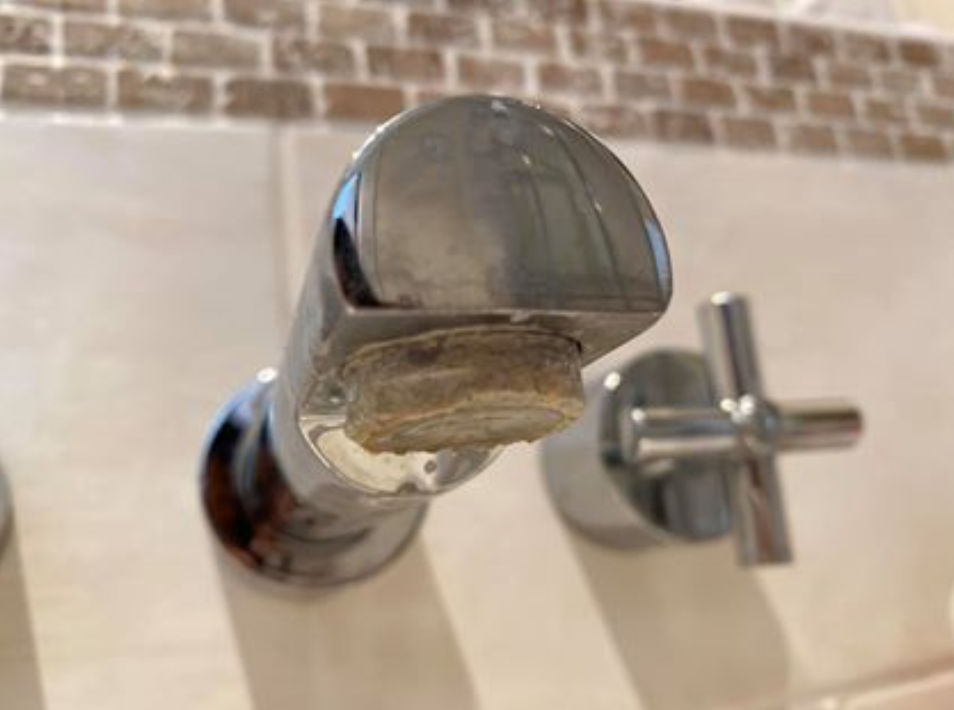A screw head can become stripped when a fastener meets a lot of resistance, using the wrong sized screw bit, or plain old user error. Unlike the extra difficulty involved with removing a broken screw, a screw with a stripped head can be remedied without much hassle. The easiest and most reliable way will require spending a few dollars on an extractor and having the right tools. That money can be well spent over the lifetime of the tool with the headaches and time it saves.
WARNING: Always wear protective eyewear and any additional gear to remain safe during projects.
Option #1 – Grab and Reverse Out
Locking Pliers – You may have the good fortune of the screw head and shank being exposed to the point where you can latch on with a locking pliers and turn the screw or bolt out. For this type of work a Knipex straight jaw or similar would work best.
Drill Chuck –Lock a drill chuck on the protruding screw head and shank » set drill to reverse » remove. This process can also be used when other extraction methods eventually expose enough of the shank.


Option #2 – Screw Extractors
The Alden line of screw and bolt extractors work amazingly well on hardware with a stripped screw head and resolved any extractions we performed (see below). If not available, commonly found Irwin (Hanson) extractors can be purchased at many hardware stores.
Q) How do the Alden line of extractors work?
A) The packaging and information shown on Alden’s website is self-explanatory. (i) One end drills a proper hole for extractor insertion. (ii) Flip the tool around and the extractor bites into the broken hardware for removal.
Notes:
- For continuous or a high amount of screw extractions, cutting fluid can help keep a cool and sharp cutting tool. This is a win-win situation, albeit if the surrounding material allows it (isn’t at risk to be ruined by cutting fluid).
- Metal shavings are being created, so protect the surrounding area from debris.


Tests Performed
We purposely stripped a barrage of wood screws and a few bolts to put the Alden products through the gauntlet. Several screws of each size were gone through to make sure we had accurate results, and not just pure chance. This is not to say we covered every scenario, but if you follow the manufacturer’s instructions and FAQ section along with some of our tips there should be near, if not a 100% positive outcome.
Phillips, square, & torx head – These head fasteners types are the easiest to address. They already have a deep enough indentation when stripped out that the Alden products can rapidly burnish –then flip the bit around to extract. All-in-all there was little to no fuss in the tests listed. A well designed and convenient tool for these sort of extractions.
Flathead – With a new bit and burnishing end you can drill a proper hole for extraction. Once the bit starts to get dull you will need a drill to create a pilot hole. Unlike the above screw head designs, you don’t have that indention to work with, that otherwise makes burnishing quick and easy. Note: If having drill start issues, a center punch works wonders to keep a drill from wondering. A simple and effective tool like the Dasco products can be bought for under $5 at many home improvement stores.
- #8 x 2 ¼” stainless trim screw – With the shallow square head and a harder stainless material a little effort was needed after several uses to burnish a deep enough hole and allow the extractor end to dig in properly. (i) Be prepared to use cutting fluid if extracting a lot of these screw types, and possibly a drill bit once the burnish end wears out.
- # 10 x thru 4 ½” (standard diameter framing screws) – Screws were easily burnished and extracted
- # 12 x thru 3 ½” (standard diameter framing screws) – Screws were easily burnished and extracted
- # 14 x thru 3 ½” – Screws were easily burnished and extracted
- #16 x 2 ½” – Screws were easily burnished and extracted
- #14 x 3.5″ wood screw – Screw head snapped off. (i) When trying to drill and extract the remaining small diameter (5mm) screw shaft with the #1 Grabit, the walls blew out, and the tool could no longer grab. (ii) * Failure – We are going to chalk this up to a faulty screw and not a tool issue, as none of the other tests suffered any similar problems.
Metal to metal or metal to plastic screws – We didn’t get too in-depth with these type of fasteners, as the ones above were much more aggressive. If the Alden tool extractor dealt with those, these type were of no issue, unless addressing a seized screw or bolt.
- ¼ x 1″ (added some low strength loctite (blue) to create more resistance) – Screws were easily burnished and extracted.
Conclusion
Once a proper sized hole was made the extraction end of the bits aggressively latched onto a screw head. There was never an issue of slippage or letting go, unless we didn’t make a hole deep enough.
I have read several negative reactions by users on the retailers comments section. I’m not sure what went wrong, but we went through over 50 different screws, tried several scenarios, and utilized two different GrabitPro sets. I’m as guilty as anyone of user error, so if you suffer any issues…maybe step back, clear your head, and make sure you are addressing the problem correctly.








